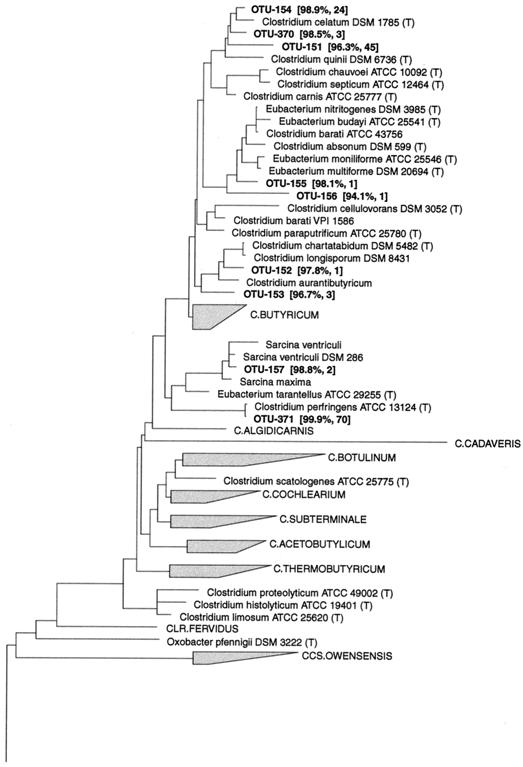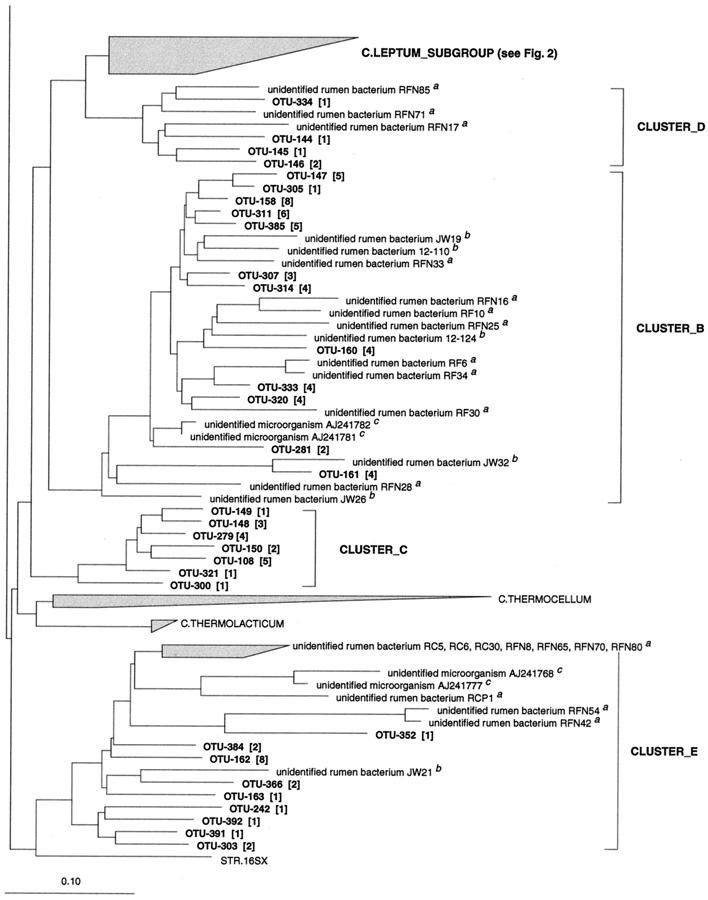FIG. 1.
Dendrogram showing the phylogenetic affiliation of OTUs in the Clostridium botulinum group (RDP reg. no. 2.30.9.2) and four deep-branching clusters of OTUs from the porcine GI tract. Near-full-length 16S rDNA sequences were aligned to the Ribosomal Database Project small subunit rRNA alignment version 7.1 and added to the matching phylogenetic tree without changing the topology of the tree by using the constrained maximum-parsimony method provided in the ARB software. 16S rDNA sequences from the bovine rumen (superscript a [47] and b [54]) and the GI tract of a pig (superscript c [33]) were added to this tree. The scale bar represents a 10% estimated sequence divergence. For each OTU the similarity to the closest related known bacteria and the number of clones belonging to that phylotype are indicated. The most closely related bacteria in the database and the mean similarity for the deep-branching clusters were as follows: CLUSTER__B, Acetivibrio cellulolyticus (84.1%); CLUSTER__C, Acetivibrio cellulolyticus (86%); CLUSTER__D, Eubacterium plautii (84.6%); CLUSTER__E, STR.16SX-1 (81.7%).


